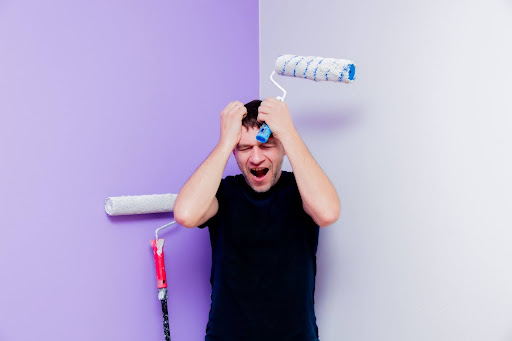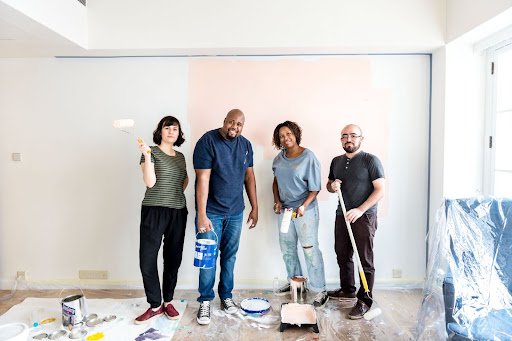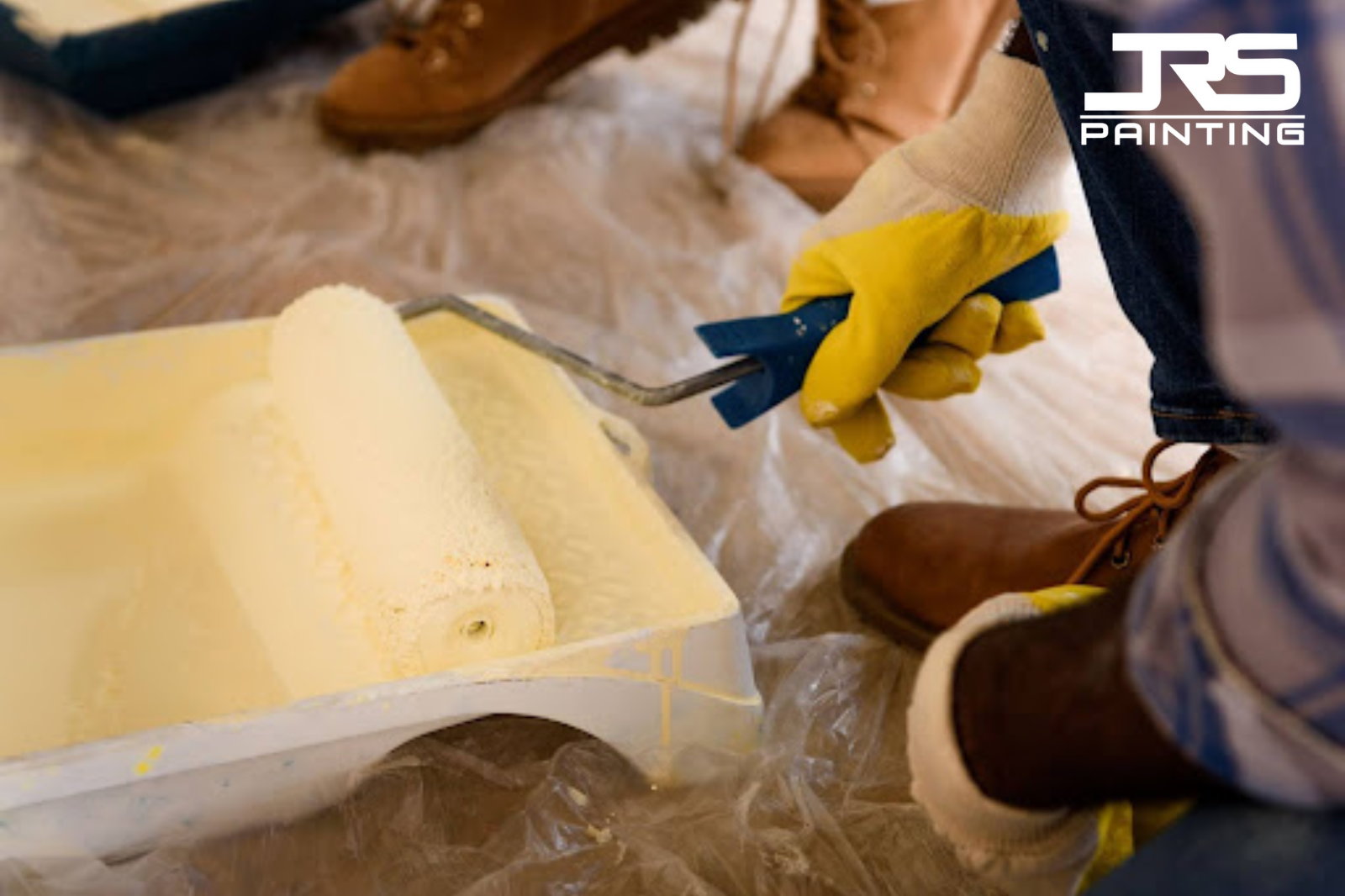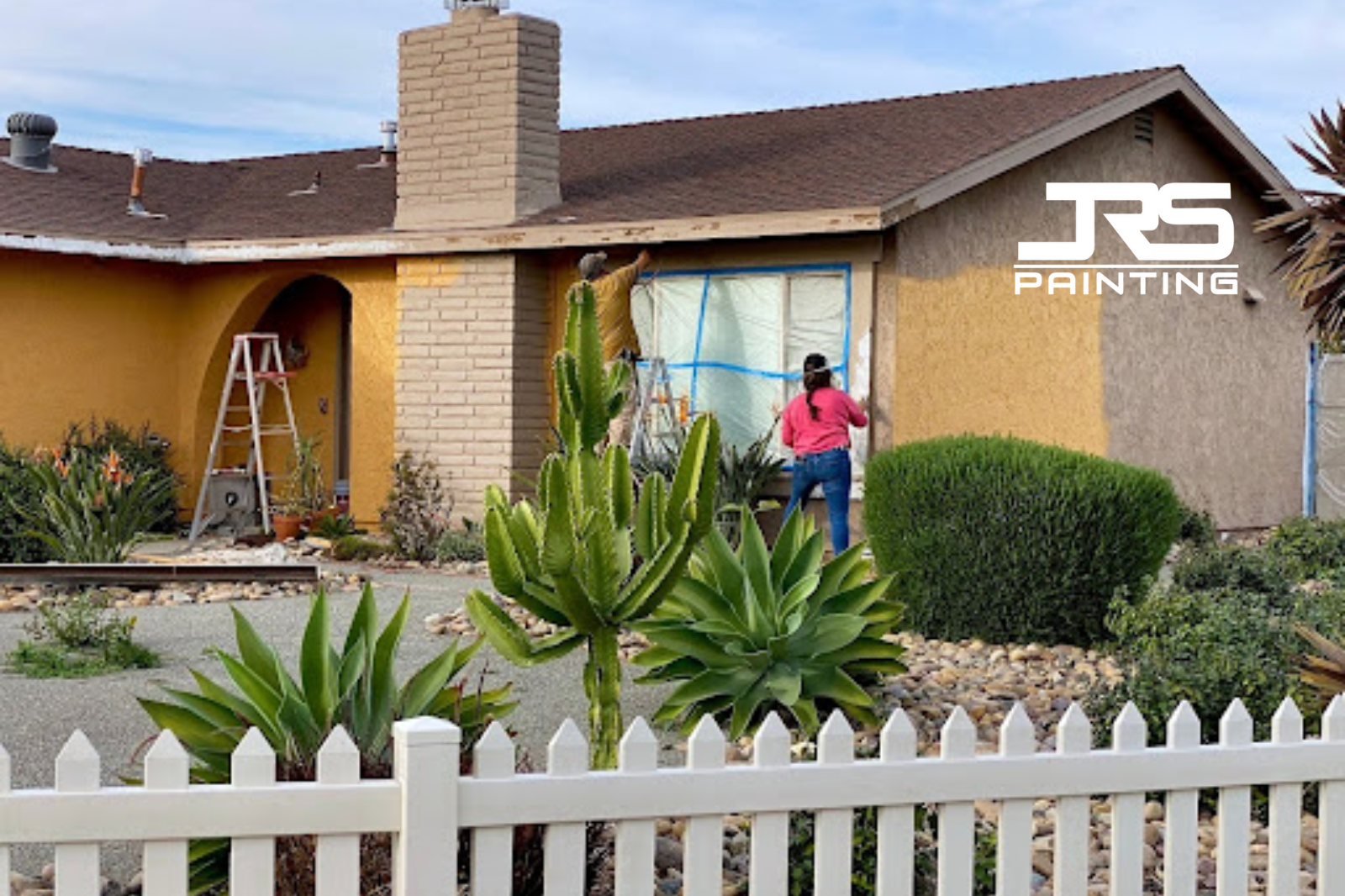
Living in Ahwatukee means enjoying stunning desert views and year-round sunshine, but it also means your home's exterior faces unique challenges. The intense Arizona sun, extreme temperature swings, and monsoon rains demand more from your paint job than homes in milder climates. Unfortunately, many homeowners make costly exterior painting mistakes that lead to premature paint failure, wasted money, and frustration, as well as potential issues with HOA compliance.
Whether you're planning a DIY project or hiring professional house painters, understanding these common pitfalls can save you thousands of dollars and ensure your home maintains its curb appeal in our demanding desert environment.
10 Exterior Painting Mistakes to Avoid

1. Inadequate Surface Preparation
Rushing wholly or through skipping proper surface preparation is the number one reason exterior paint jobs fail in Ahwatukee. Many homeowners think they can simply roll paint over existing surfaces without thorough cleaning, scraping, or priming. Our desert environment creates unique challenges—chalky residue from UV exposure, dust accumulation from desert winds, and mineral deposits from hard water irrigation systems. Paint applied over these contaminants will peel, chip, or fail within months.
The Right Approach:
- Pressure wash all surfaces to remove dirt, dust, and chalky residue
- Scrape off all loose or peeling paint completely
- Fill cracks and holes with high-quality exterior filler rated for extreme temperatures
- Sand rough areas, smooth, and remove any remaining loose material
- Pay special attention to stucco surfaces common in Ahwatukee neighborhoods—these textured walls trap dirt and require thorough cleaning
2. Choosing Paint Unsuitable for Extreme Climate
Using standard exterior paint or cheap alternatives that aren't formulated for desert conditions is a critical error. Some homeowners even mistakenly use interior paint on exterior surfaces. Our temperatures can exceed 115°F in summer, and the intense UV radiation is among the highest in the nation. Standard paints will fade rapidly, chalk excessively, or fail within 2-3 years instead of the expected 7-10 years.
The Right Approach:
- Invest in premium exterior paints formulated explicitly for desert climates
- Look for paints with excellent UV resistance and thermal expansion properties
- Choose acrylic latex paints that perform exceptionally well in Phoenix's climate
- Ensure your paint has fade-resistant pigments and high-temperature durability ratings
- Never compromise on quality—the upfront investment pays for itself in longevity
3. Ignoring Extreme Weather Patterns
Painting during inappropriate weather conditions, particularly during our scorching summers or unpredictable monsoon season, is a costly error. Temperatures above 90°F cause paint to dry too quickly, which prevents proper adhesion and creates brush marks. Monsoon humidity and sudden storms can ruin freshly painted surfaces.
The Right Approach:
- Plan your project during Ahwatukee's optimal painting season: October through April
- Paint when temperatures are between 50-85°F
- Avoid painting in direct sunlight—work on the shaded side of your home
- Check 48-hour weather forecasts to avoid monsoon storms
- Never paint when surfaces are too hot to touch comfortably
4. Poor Color Selection for Desert Living and HOA Compliance
Choosing colors based solely on personal preference without considering factors such as heat absorption, fade resistance, or local aesthetic standards can lead to significant problems. Dark colors absorb excessive heat, increasing cooling costs and accelerating paint degradation. Additionally, many Ahwatukee HOAs have strict color guidelines, and non-compliant colors can result in fines and forced repainting.
The Right Approach:
- Select lighter, earth-toned colors that reflect heat: warm beiges, soft grays, sage greens, and desert tans
- Review your HOA's approved color palette before making final decisions
- Consider how colors will appear in Arizona's intense sunlight—they often look more vibrant than expected
- Choose colors that complement the natural Sonoran Desert landscape
- Consult with neighbors or your HOA architectural committee if unsure
5. Skipping or Misapplying Primer
Not using primer at all, applying primer over poorly prepared surfaces, or using the wrong primer type for your specific surface material creates serious adhesion problems. Our stucco homes and diverse exterior materials require specific primers to prevent issues like alkaline bleeding, poor adhesion, and color bleeding through the topcoat.
The Right Approach:
- Always use a high-quality exterior primer appropriate for your surface material
- For stucco homes (common in Ahwatukee), use specialized masonry primers that handle textured surfaces and prevent alkaline bleeding
- Apply primer over clean, properly prepared surfaces only
- Ensure primer compatibility with your chosen topcoat
- Don't skip primer when changing from dark to light colors or painting bare surfaces
6. Rushing the Drying and Curing Process
Applying subsequent coats too quickly or moving outdoor items back into place before the paint has fully cured is a common error. Many assume Arizona's dry air means instant drying, but while our low humidity makes surfaces appear dry quickly, thick stucco walls and quality paints need adequate time to cure properly. Rushing leads to poor adhesion, marks, and premature wear.
The Right Approach:
- Follow manufacturer recommendations for recoat times—typically 4-6 hours in our climate
- Allow full cure time (usually 30 days) before heavy use or cleaning
- Be patient with thick applications on textured stucco surfaces
- Don't replace outdoor furniture or decorations for at least 48 hours
- Test inconspicuous areas before assuming paint is fully dry
7. Using Inappropriate Tools and Techniques
Using cheap brushes and rollers, selecting the wrong nap lengths for textured surfaces, or applying paint that is too thick or too thin can result in poor outcomes. Our prevalent stucco and textured surfaces require specific tools and techniques. Using the wrong tools leads to poor coverage, streaking, and wasted paint.
The Right Approach:
- Invest in high-quality brushes and rollers—they pay for themselves in better results and time saved
- Use appropriate nap lengths: ¾" to 1" for heavy stucco textures, ½" for medium textures
- Consider renting or buying spray equipment for large stucco areas
- Use quality extension poles to maintain consistent pressure and avoid ladder repositioning
- Apply paint at manufacturer-recommended coverage rates—neither too thick nor too thin
8. Compromising on Safety in Desert Conditions
Inadequate safety precautions, especially underestimating the dangers of working in extreme heat and bright sunlight, create serious risks. Desert conditions intensify safety concerns—extreme heat can cause heat exhaustion, bright sunlight creates glare and shadows that hide hazards, and dehydration happens quickly.
The Right Approach:
- Work during cooler morning hours when possible
- Use sturdy, properly rated ladders positioned on level ground
- Wear UV-protective clothing, wide-brimmed hats, and sunglasses
- Stay hydrated and take frequent breaks in the shade
- Protect landscaping from paint spills—desert plants are expensive to replace
- Turn off the power to exterior outlets when working nearby
9. Failing to Protect Valuable Desert Landscaping
Not adequately protecting mature desert plants, hardscaping, and expensive outdoor features during painting can result in costly damage. Desert landscaping is significantly more expensive to replace than traditional lawns and plants. Mature saguaros, palo verdes, and agaves represent substantial investments that paint damage can destroy.
The Right Approach:
- Cover all plants with lightweight drop cloths or plastic sheeting
- Protect expensive hardscaping like natural stone and decorative concrete
- Remove or cover outdoor furniture, lighting fixtures, and decorative elements
- Be extra careful around irrigation systems—paint in drip lines can damage desert plants
- Consider the value of your mature desert landscaping when planning protection measures
10. Attempting Complex Projects Beyond Your Skill Level
Taking on multi-story painting projects, extensive stucco repairs, or complex color schemes without adequate experience, especially in Arizona's challenging conditions, often results in poor outcomes and safety issues. Two-story homes are typical in our neighborhoods, and working at heights in extreme heat significantly increases risks. Additionally, stucco repair requires specialized knowledge to maintain the integrity of your home's envelope in our climate.
The Right Approach:
- Honestly assess your experience with ladder work and comfort in extreme conditions
- Consider professionals for homes requiring extensive ladder work
- Evaluate whether stucco damage needs professional repair before painting
- Get professional help for complex color schemes or architectural details common in Ahwatukee's diverse home styles
- Factor in your available time during optimal painting seasons
Professional Exterior Painting in Ahwatukee

While DIY exterior painting can save money, the unique challenges of our desert environment often make professional painting a wise investment. Professional painters understand:
- Local climate challenges and optimal timing
- HOA requirements and neighborhood standards
- Proper surface preparation for stucco and desert-specific materials
- Quality paint selection for extreme UV and heat exposure
- Safe working practices in challenging conditions
Take Action During Optimal Season
Ahwatukee's painting season runs from October through April, with peak conditions typically occurring from November through March. Don't wait until the last minute. Quality painters book up quickly during these optimal months.
Whether you choose to tackle the project yourself or hire professionals, understanding these potential mistakes will help you make informed decisions and achieve beautiful, long-lasting results. In Arizona's demanding climate, there's no substitute for doing the job right the first time.
Your Ahwatukee home deserves the best protection against our desert elements. Invest in quality materials, proper techniques, and adequate preparation to ensure your exterior paint job enhances your home's beauty and value for years to come.
Frequently Asked Questions
Ready to Transform Your Ahwatukee Home's Exterior?
Don't let costly painting mistakes damage your home's beauty and value. At Jr's Painting, we've been helping Ahwatukee homeowners achieve stunning, long-lasting exterior paint jobs for over 20 years. Our team understands Arizona's unique climate challenges, HOA requirements, and the specific needs of desert homes.
We specialize in:
- Expert surface preparation for stucco and desert-specific materials
- Premium paint selection designed for extreme UV and heat
- HOA-compliant color consultation
- Professional application techniques that maximize paint life
- Complete protection of your valuable desert landscaping
Get your FREE estimate todayand discover why Ahwatukee homeowners trust Jr's Painting for their exterior painting needs.
Related Articles
Exterior Painting, Residential Painting







